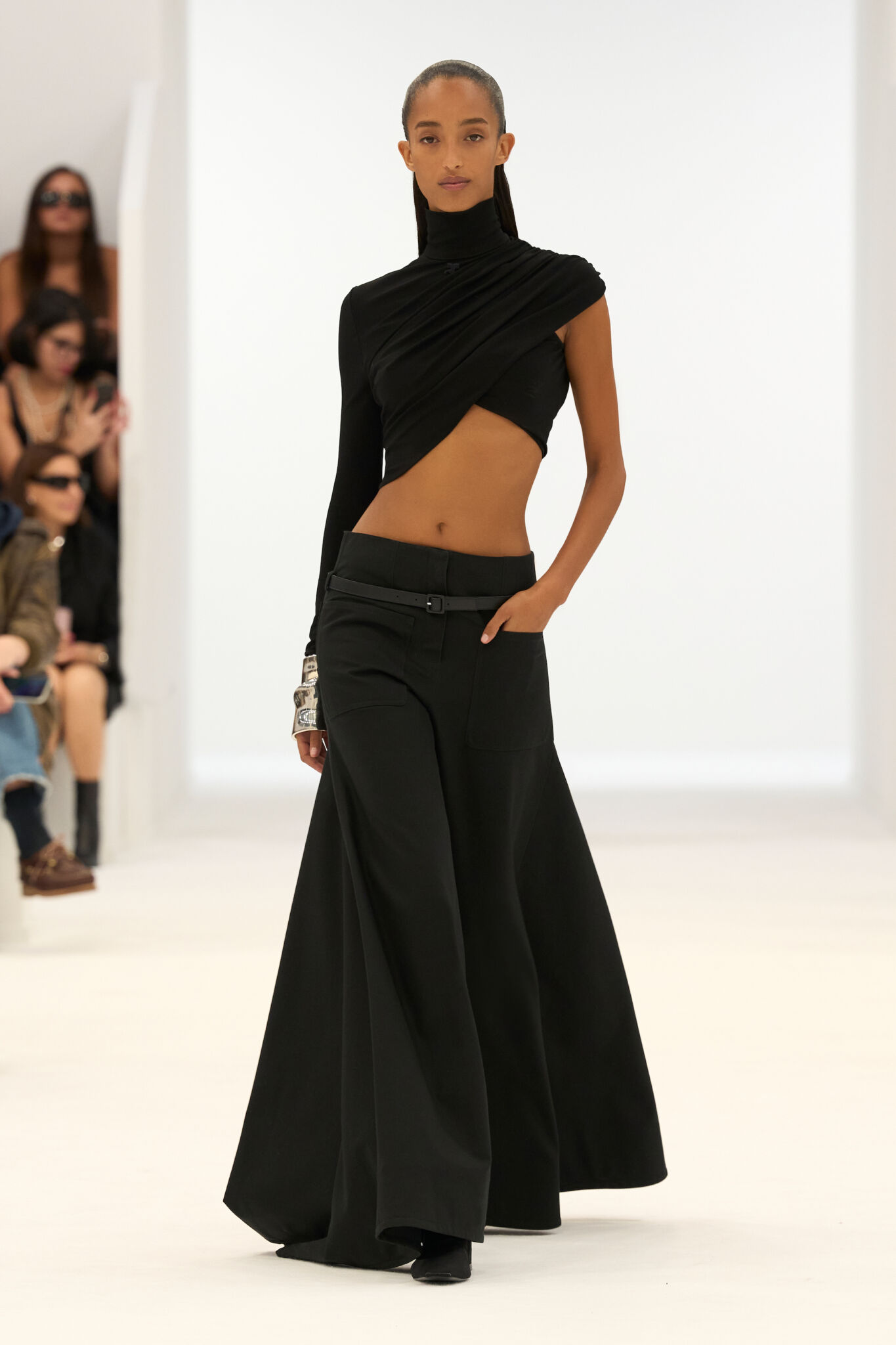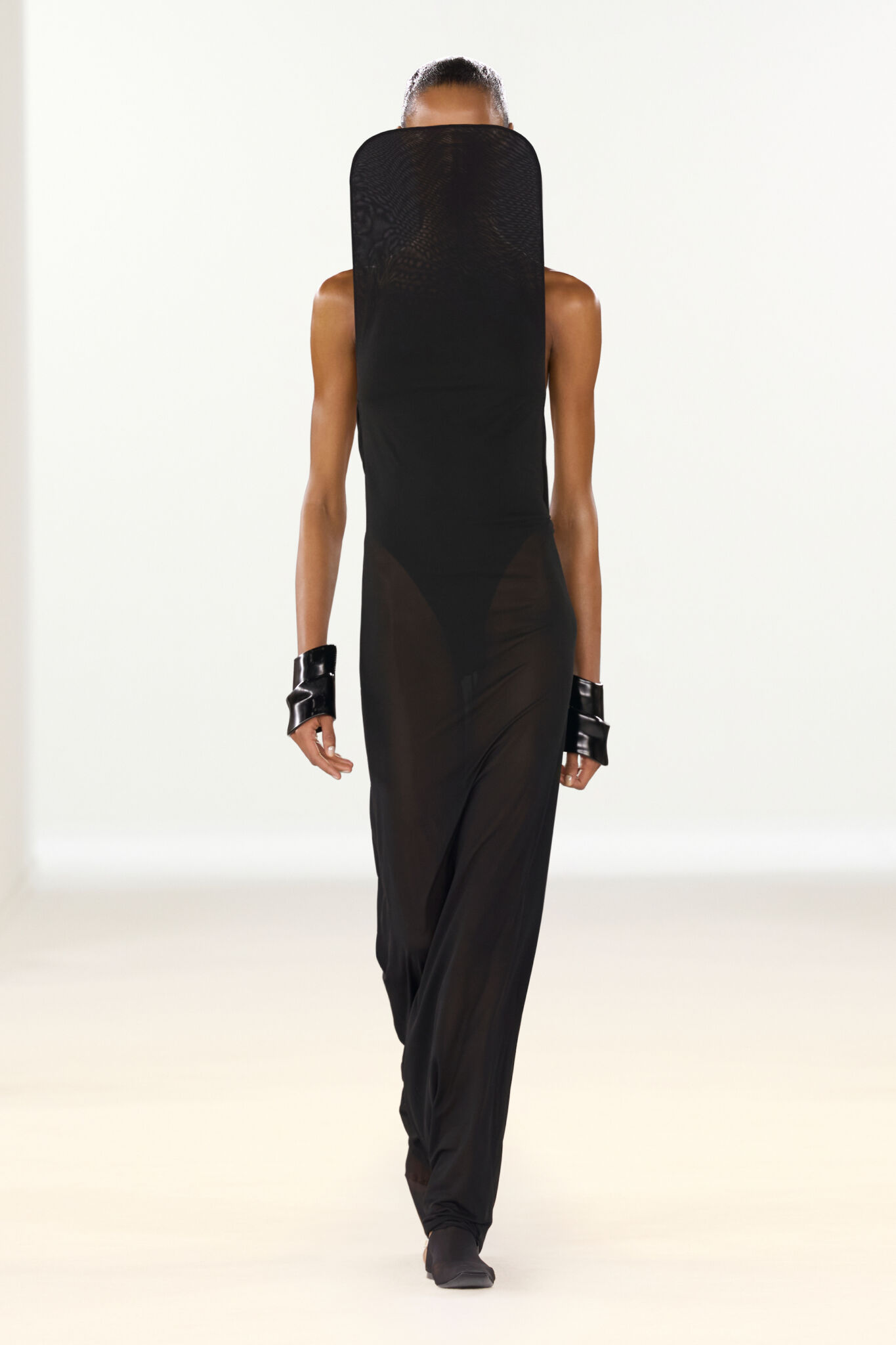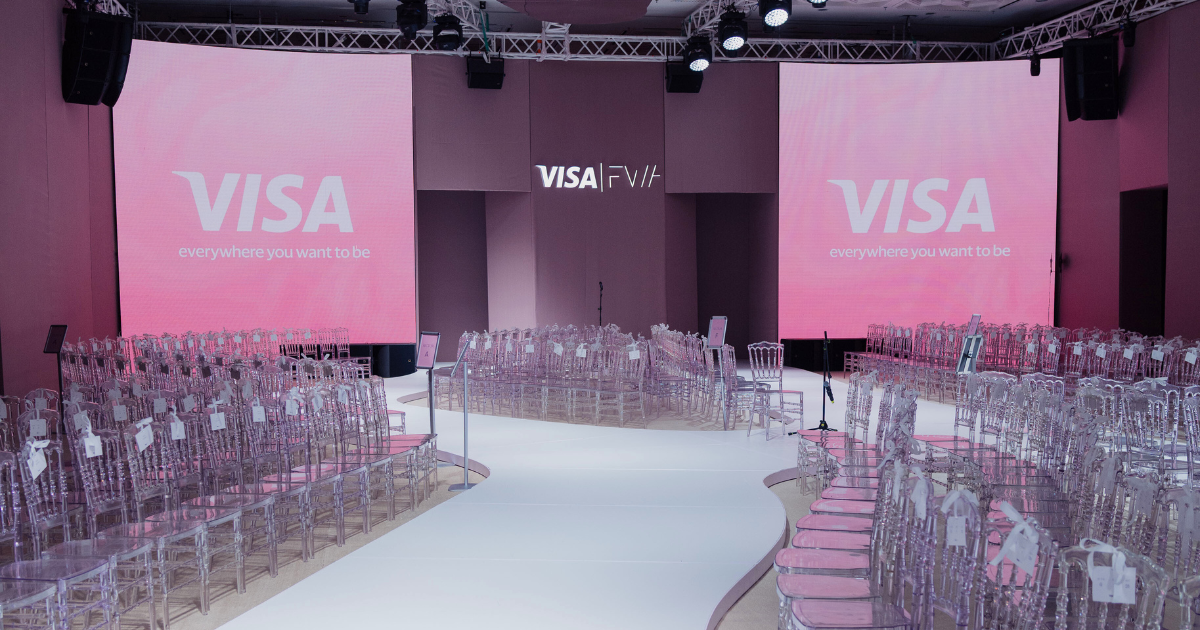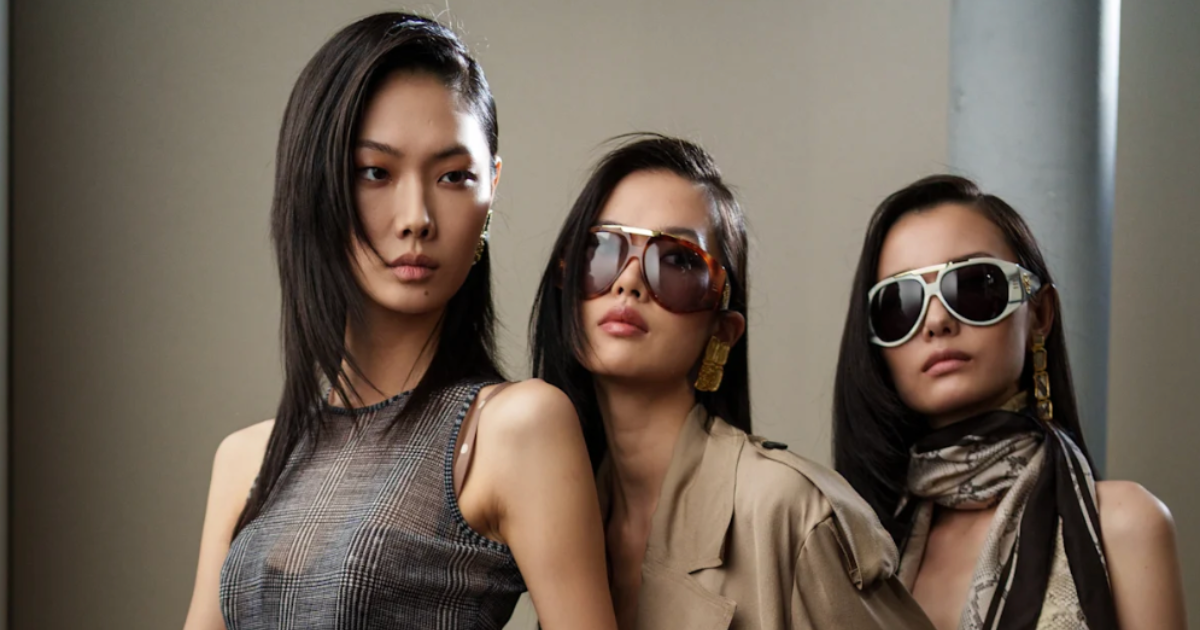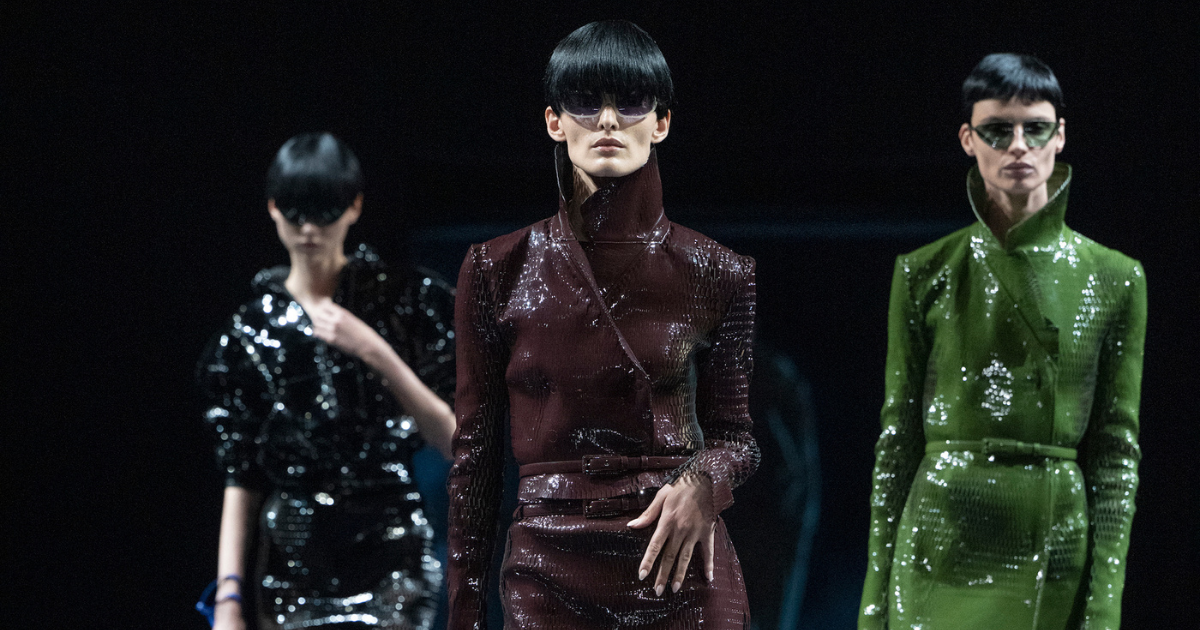Nostalgia for the Past, Adventures at Père Lachaise, and Bow-Tie Moments from the First Days of Paris Fashion Week
What made the whole fashion world talk about Paris
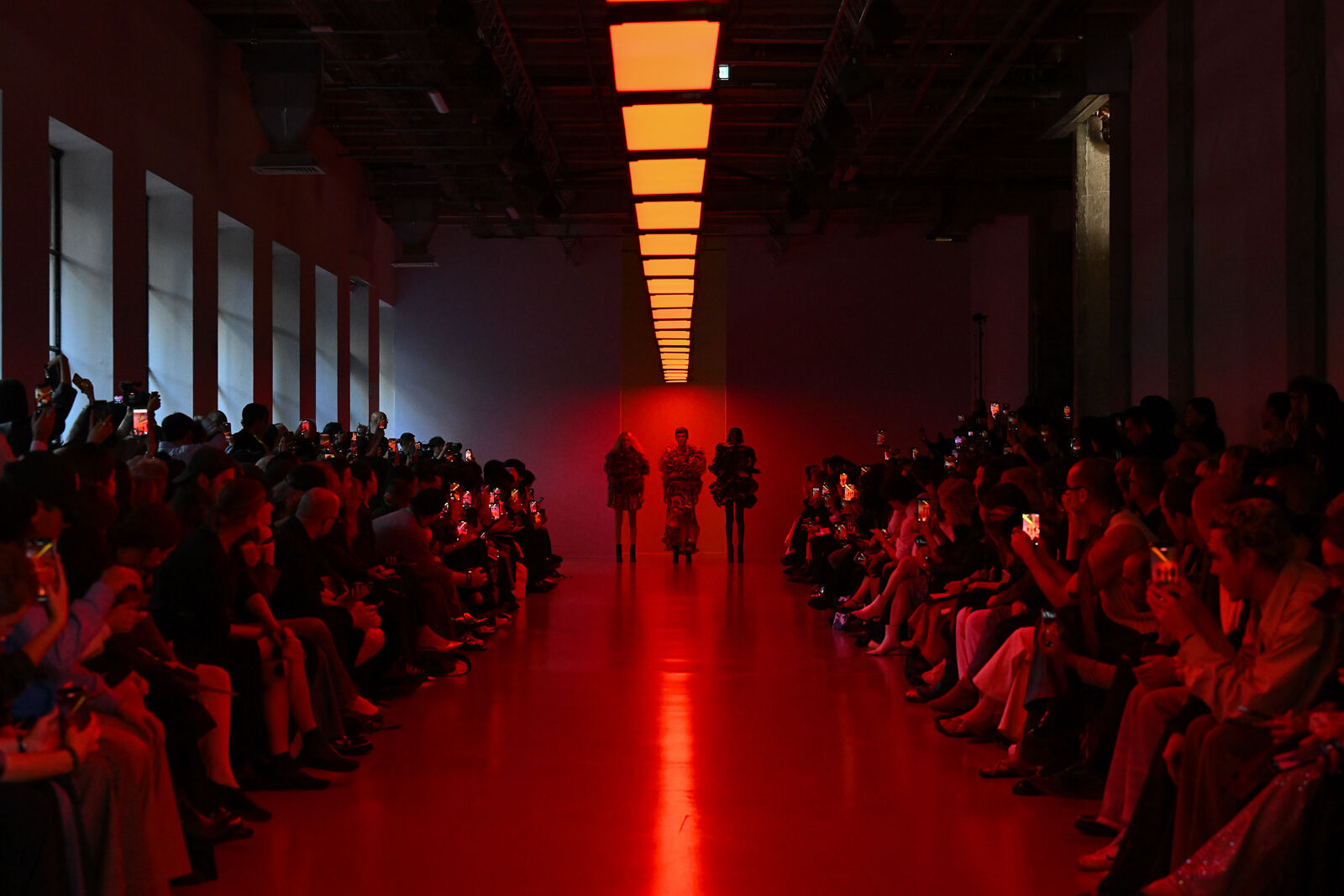
Fashion Month has finally reached the French capital — Paris closes the Spring–Summer 2026 season.
The first days were filled with contrasts: from daring young names offering a fresh vision of style to the long-revered giants of the industry.
The schedule proved truly intense — shows and presentations ran from early morning until late evening. The collections revealed the key themes of the season: deconstructed volumes, minimalism, an explosion of color, and intricate lacework — together shaping the aesthetic of Spring–Summer 2026.
Footwear also claimed its spotlight: sneakers appeared in nearly every collection, in all imaginable variations, and are already confidently vying for it-shoe status next season. Let’s take a closer look at the standout collections from the opening days of Paris Fashion Week:
J. Simone
A playful love letter to Paris — where irony meets refined chic — set the tone for the season. Jude Ferrari transformed city symbols into fashion statements: pigeons became leg warmers, while cigarette smoke turned into denim prints through a collaboration with Labdip. The neon allure of Pigalle came alive in biker bodysuits; a giant croissant adorned a cropped top; and a reconstructed shirt-body paid homage to the sharp tailoring of La Défense. The brand’s signature “love locks” returned as accessories, and the cult CrissCross top gained new dimension. Parisian elegance ran through flowing dresses and daring hip cutouts. Ferrari charged his creations with electric energy, balancing romance and rebellion. References to Johnny Hallyday, the Eiffel Tower, and other Parisian icons turned nostalgia into dazzling kitsch.
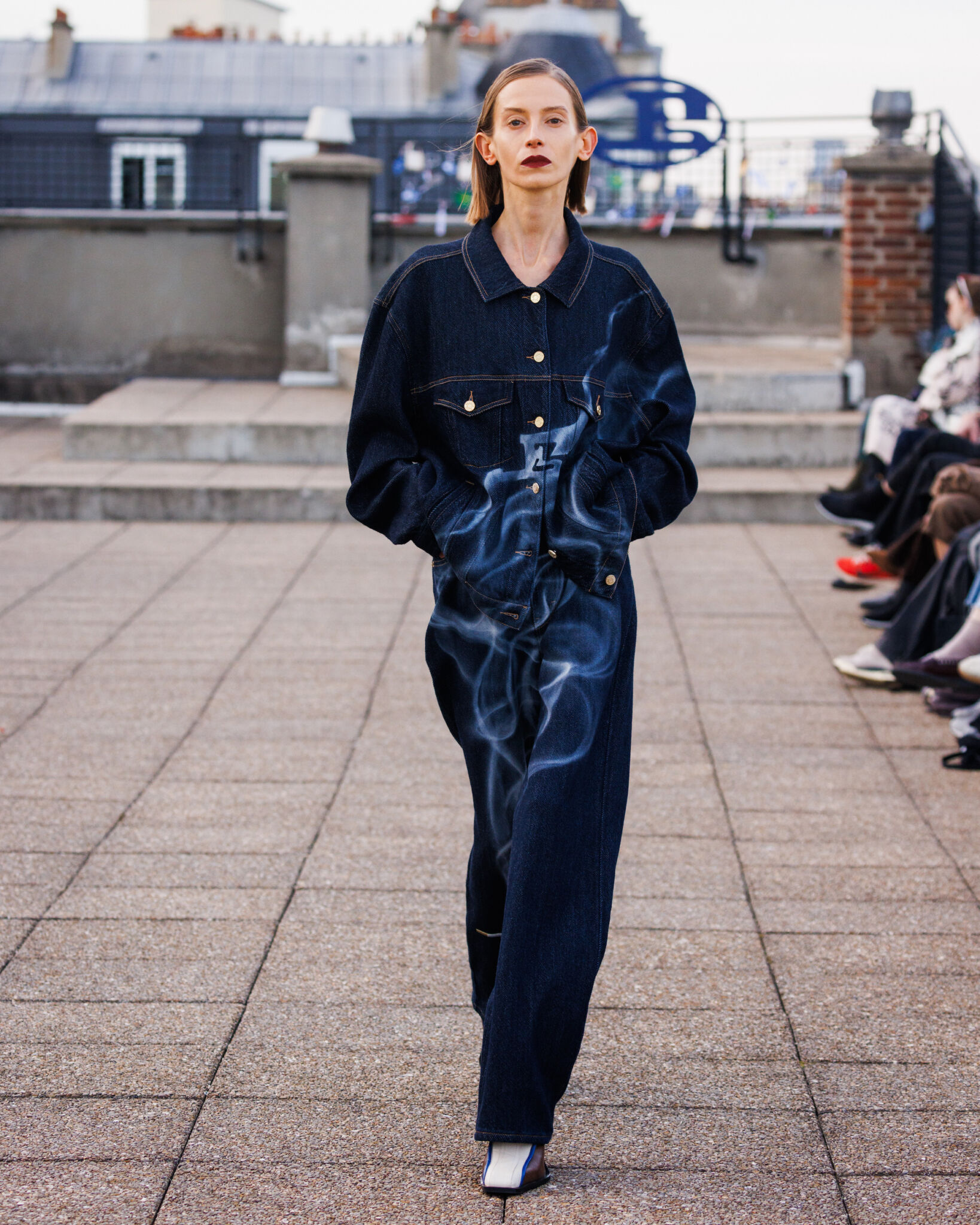
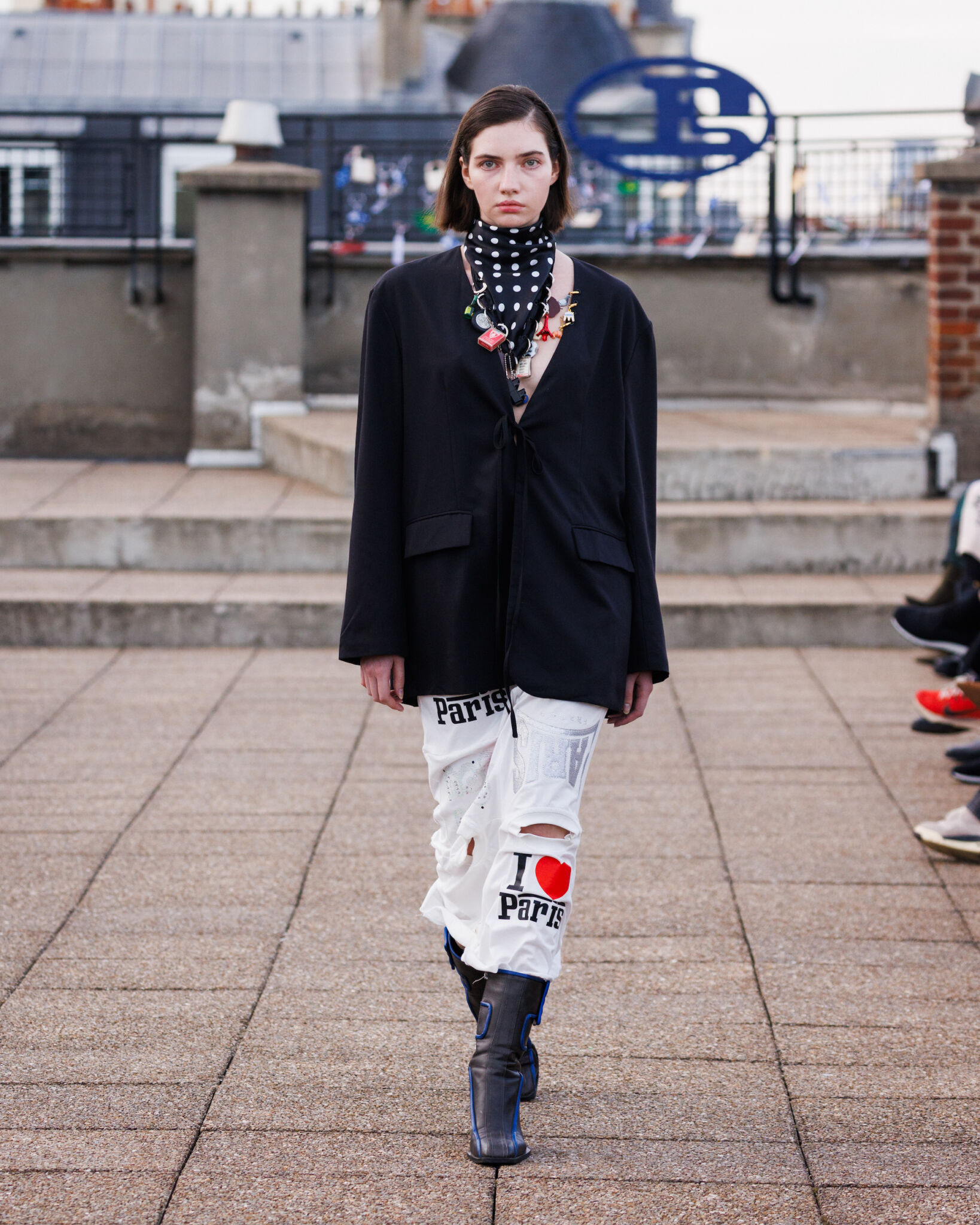
Vautrait
“Clothes remember lives once lived” — the unspoken slogan of Vautrait’s new line. The collection is built from found fragments: a sleeve from an old wardrobe, a piece of silk, a button discovered at an antique market. Each carries the imprint of a vanished moment, becoming a tangible trace of the forgotten. The designer assembles them not in a linear order, but as a constellation — where every detail echoes another. The central idea: the new can be born from remnants of the past. Instead of chasing trends, the collection offers a quiet dialogue with time. Garments become actors in a “theatre of return,” where memory and oblivion share the same light. There is no pursuit of novelty here, but rather a deep listening to the fabric’s history and silent voice.
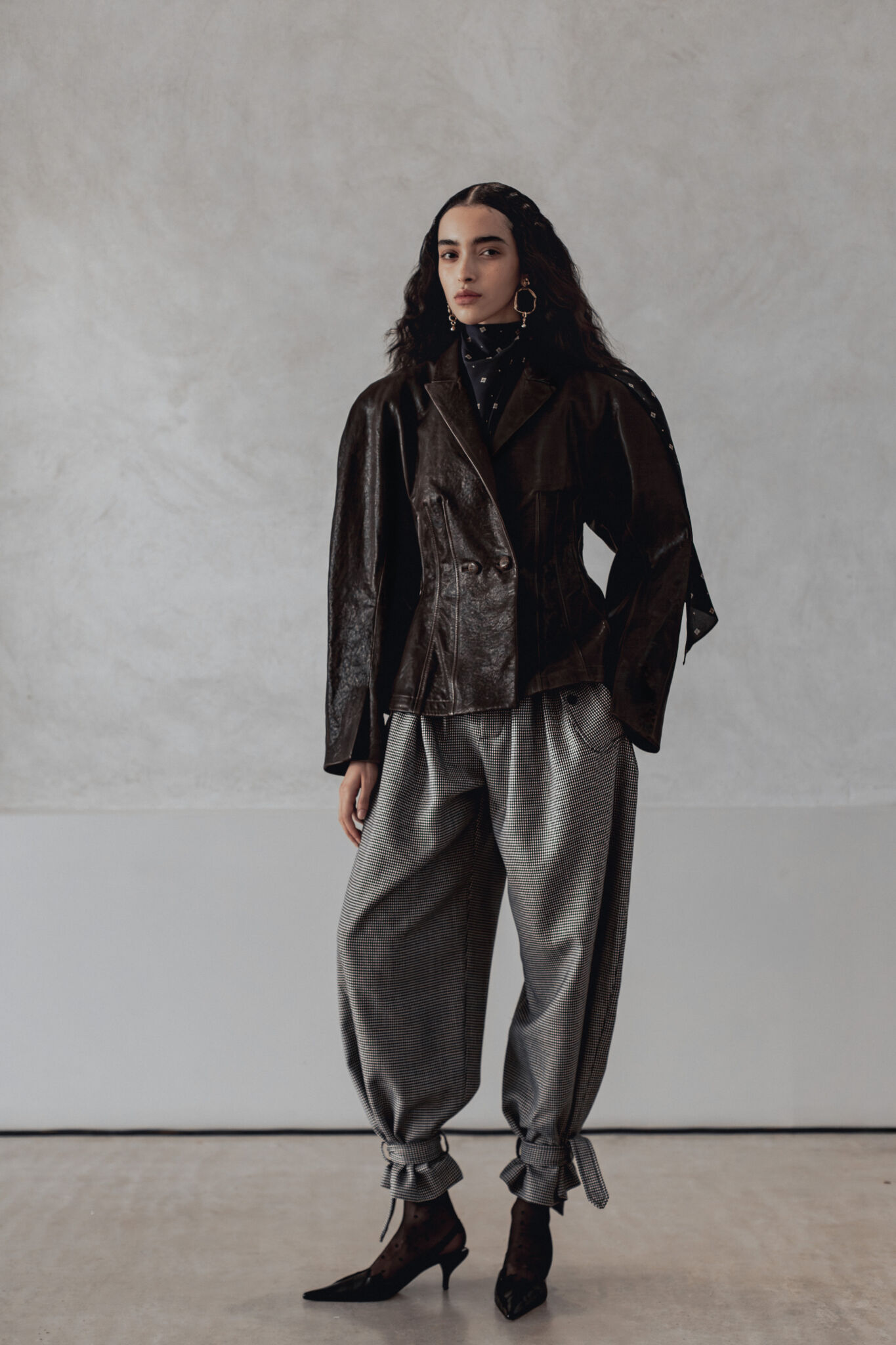
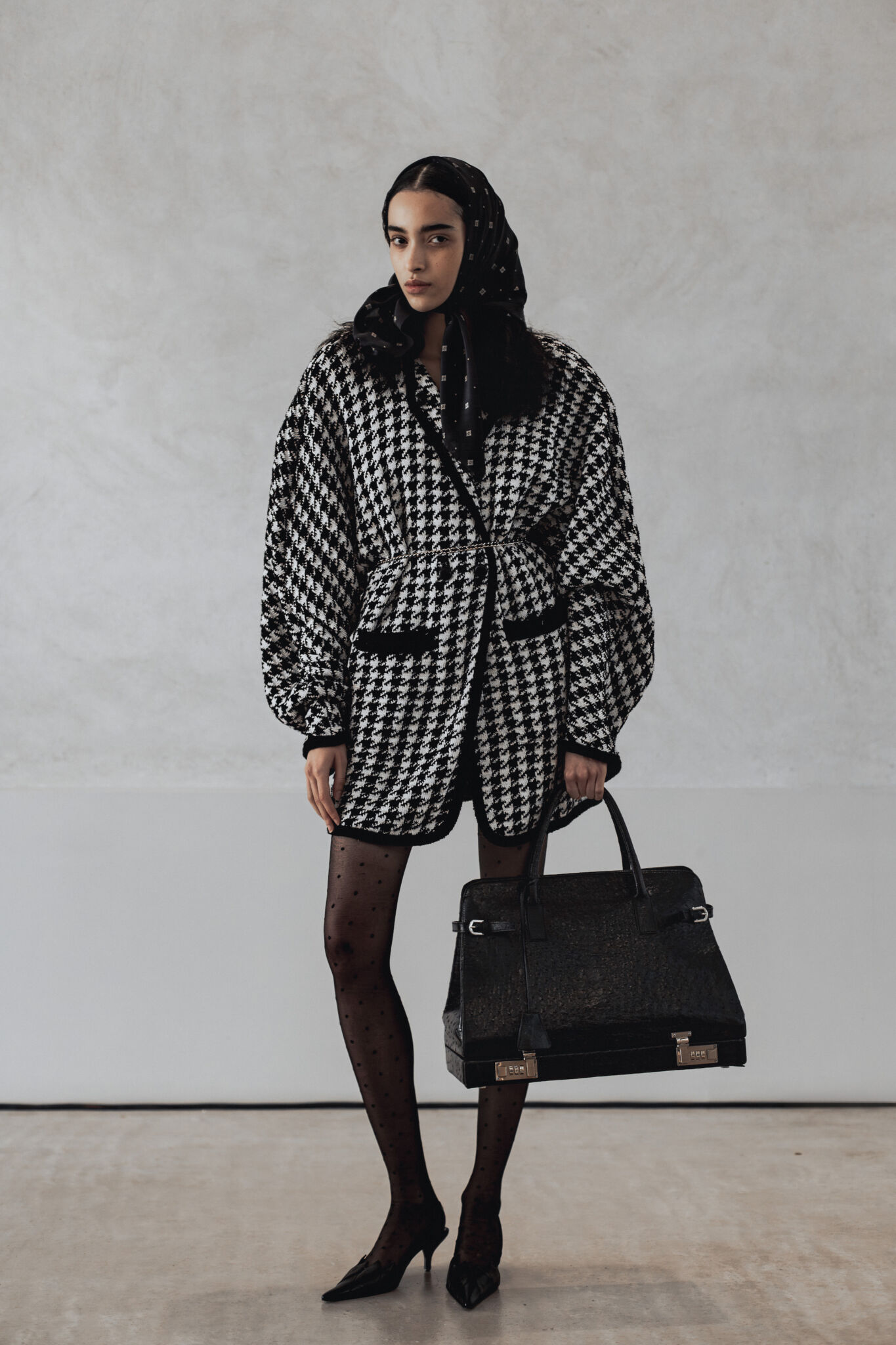
Mossi
The collection was born from Mossi Traoré’s encounter with a mysterious woman at Père Lachaise Cemetery — a woman who saw the place not as one of mourning, but as a living neighborhood full of poetry and stories. Her image inspired the designer’s collection To My Friend, Death, where the theme of life’s end becomes a meditation on beauty and philosophy. Each day of the heroine’s life unfolds like a scene: from art galleries in former chapels and cinematic strolls beneath willows to a dazzling appearance at the Met Gala. The looks reflect candlelit evenings among tombs, weddings held among gravestones, and whispered Sunday conversations in the dark. Silhouettes play with transparency and layering, like geological strata of memory. Gentle drapery, floating like umbrellas, moves with the body and air. Black serves as a poetic punctuation, while architectural forms recall the mausoleums of Père Lachaise.
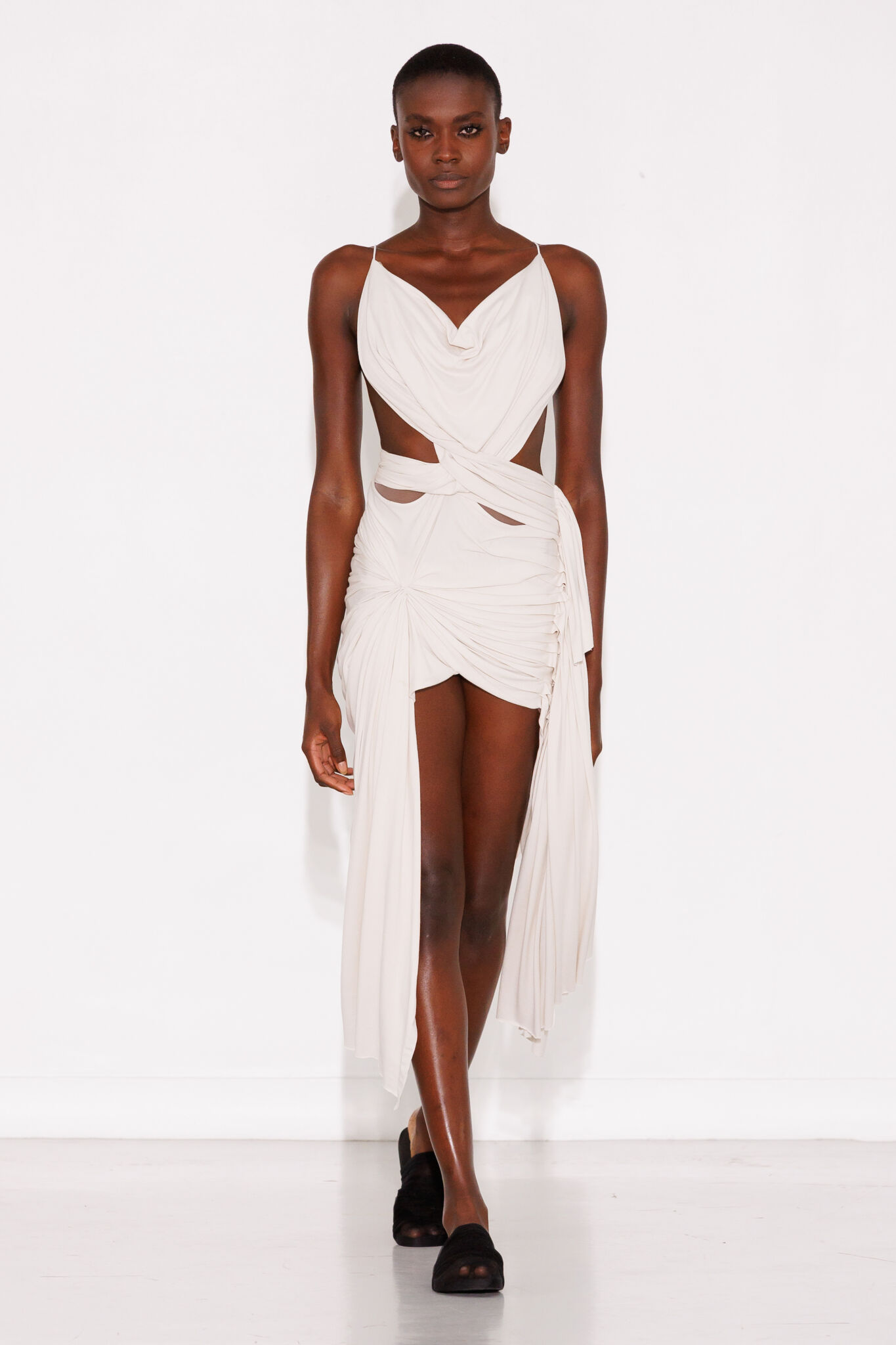
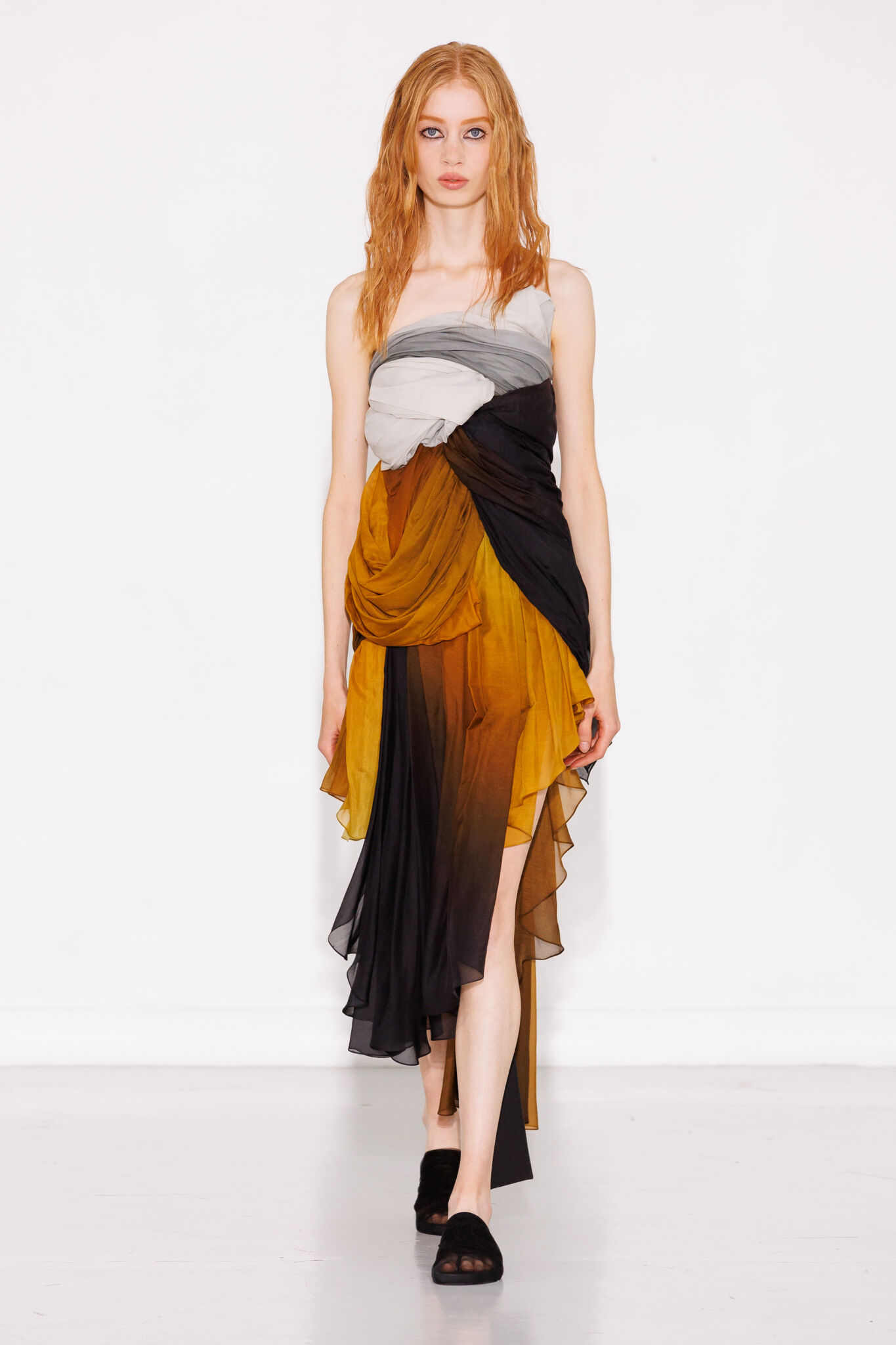
Zomer
The duo Danial Aituganov and Imrukh Ashi created a bold manifesto of proportions and imagination. They opposed minimalism with excess, turning the runway into a playground of surprise and fantasy. In their world, childlike innocence meets bridal purity, and the miniature collides with the monumental. Proportions are intentionally distorted — oversized belts, giant hair clips, and double waistlines become symbols of joyful absurdity. Humor becomes a design tool, infusing lightness into a realm where fashion is often too serious. The color palette bursts with retro vibrancy: a kaleidoscope of browns, blues, and oranges reminiscent of the 1970s. Dresses, bombers, shirts, and matching tights exude energy and optimism. Floral prints intertwine with stripes, evoking carefree freedom. Accessories shine — from men’s ties knotted into bows to a collaboration with Finnish brand Karhu, which presented ballet sneakers in vivid shades. The runway itself became a canvas of color, as models walked through pools of pigment, painting their own paths across the stage.
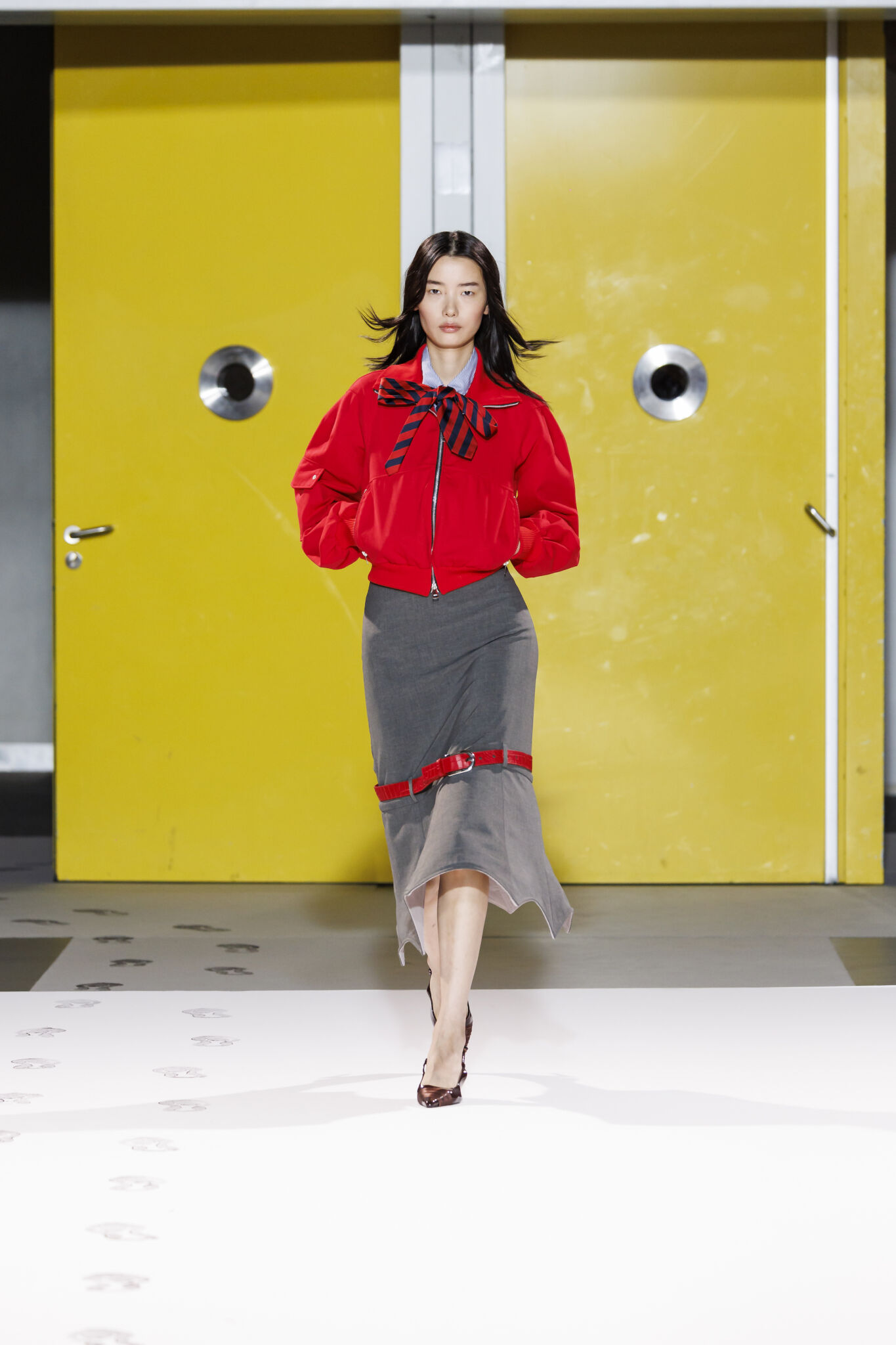
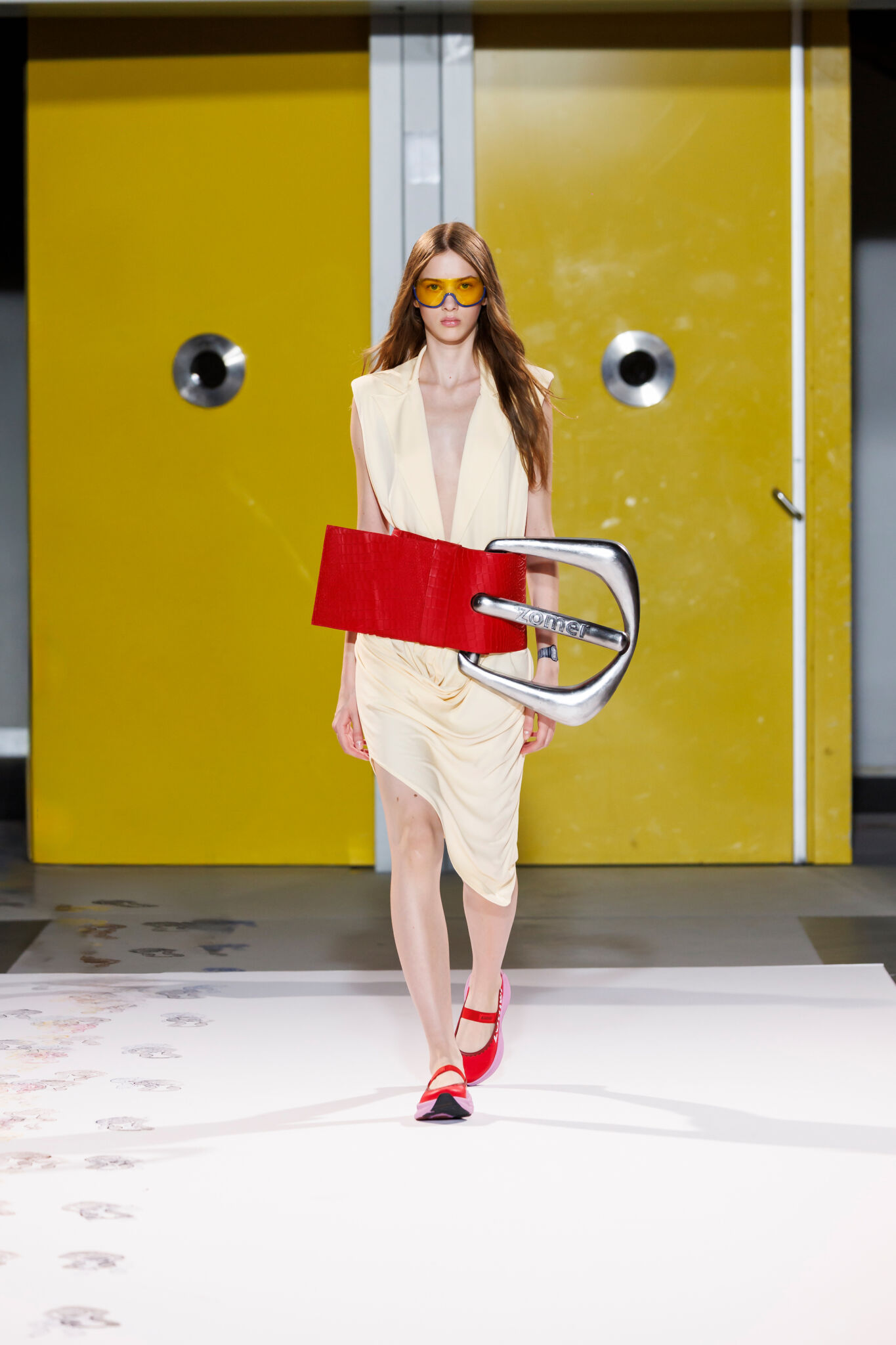
Bonbom
In its Paris debut, Bonbom explored the contrasts of identity — the tension between conservative and punk, traditional and provocative. Midi skirts, pearl necklaces, and tweed jackets met daring elements: tattoos, piercings, and revealing silhouettes. The brand emphasized the inner contradictions that make a look alive and intriguing. Another source of inspiration: the thrill of speed and physicality — motorbikes, horseback riding, and fetish culture. Bonbom drew parallels between biker gear, equestrian attire, and fetish accessories, playing with metal and anatomy. Sculptural tailoring celebrated the body: muscular shoulders, cinched waists, and expressive silhouettes projected confidence and maturity.
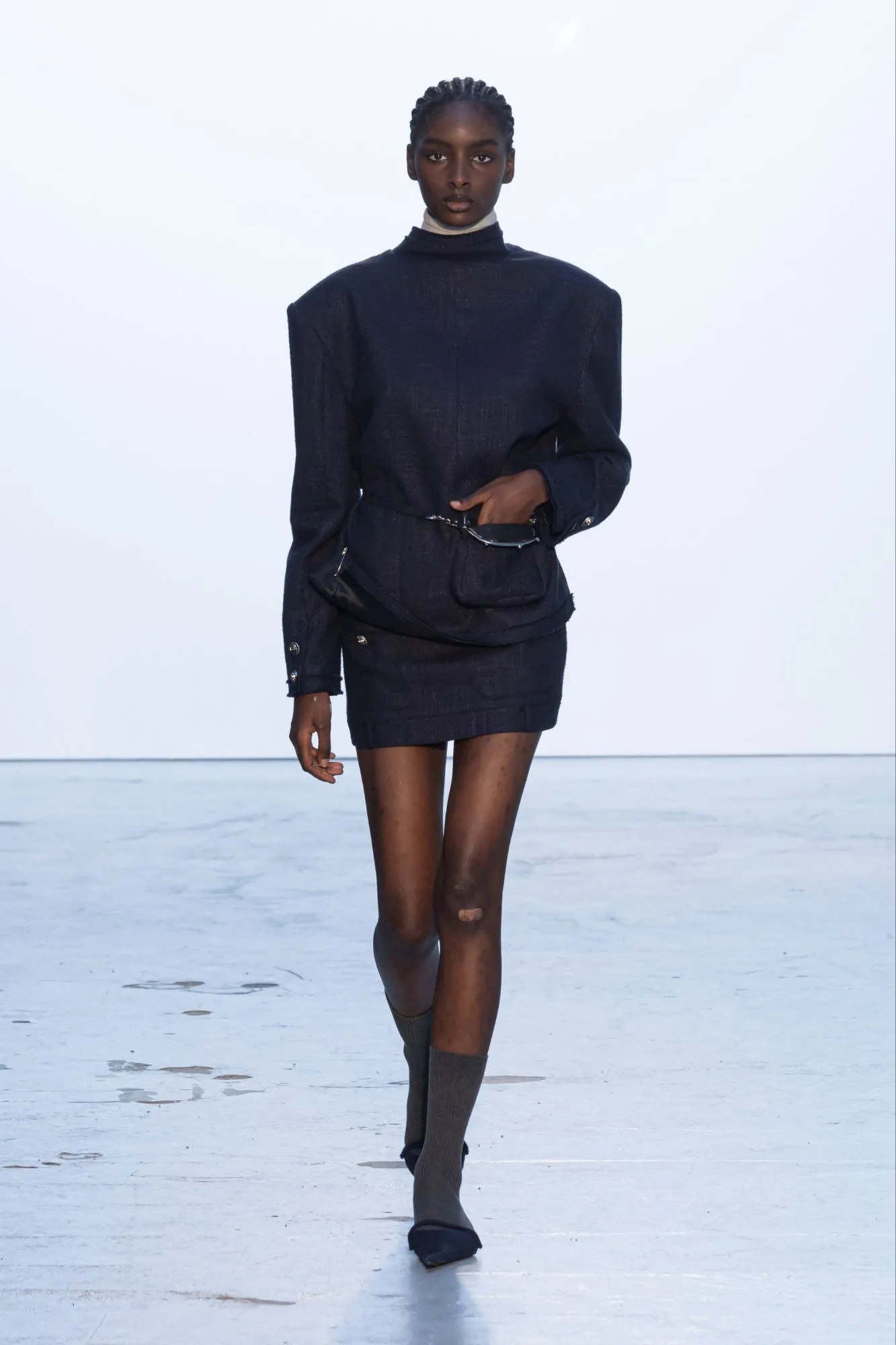
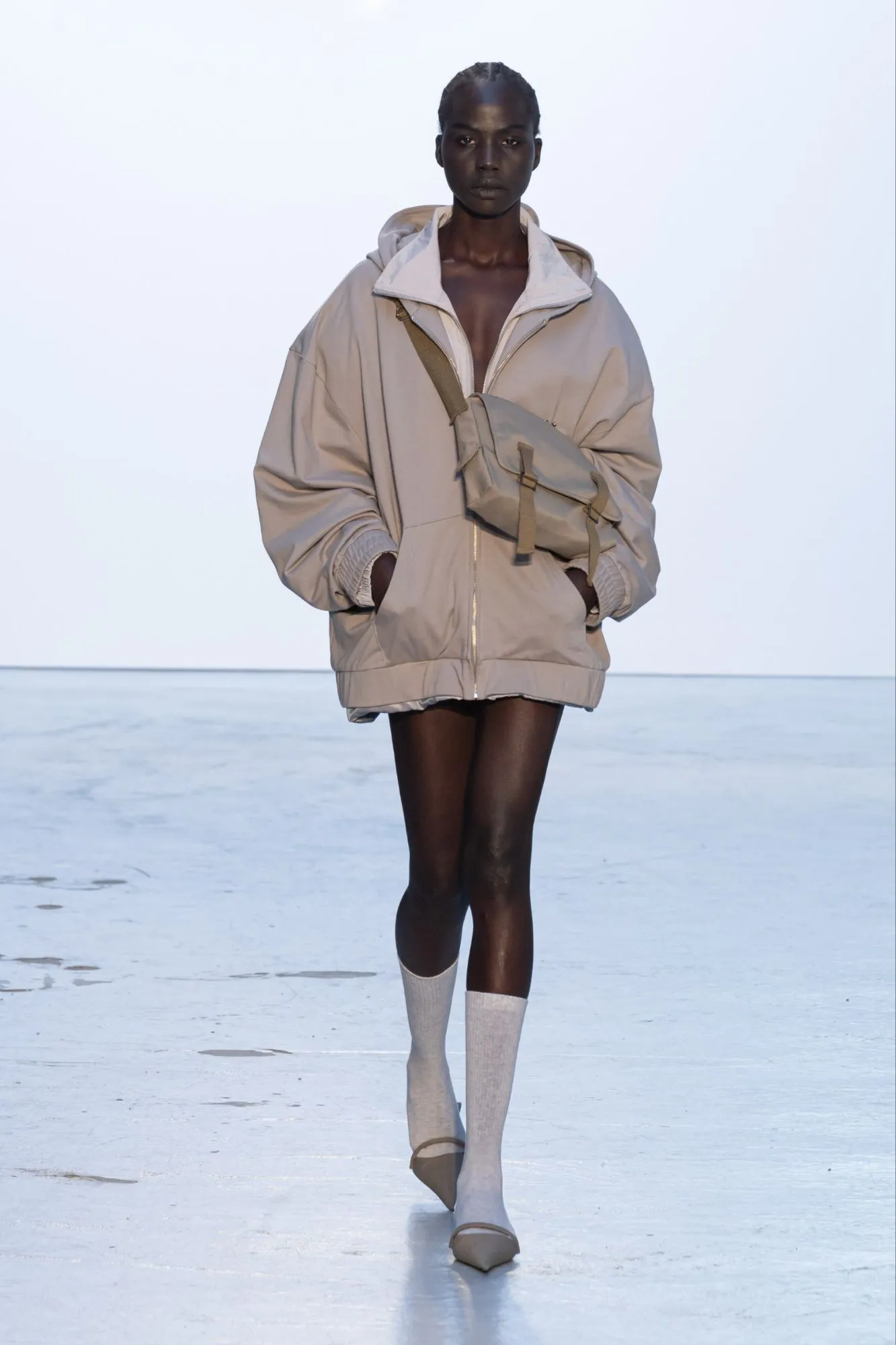
Dries Van Noten
Dries Van Noten transported us to a sun-drenched coastline, where every detail echoed the rhythm of ocean waves. Julian Klausner found inspiration in surfing, sunsets, and coastal nature, crafting looks that transcended conventional beachwear. Models shimmered like exotic sea creatures, glowing in shades of lemon, lime, mandarin, and fresh green. Transparent sequin caftans rippled over the body, and light dresses with crystals reflected sunlight on water. Two-tone jackets mixed with airy skirts, while embroidered olive shorts nodded to Victorian motifs. Sculptural wool tops with emphasized shoulders blended the aesthetics of wetsuits and elegant tees. Lightweight jersey tops with voluminous ruffles and military coats struck a balance between boldness and grace. Long ankle coats met sharp, contrasting hues, and rainbow-hued sneakers brought movement and freedom. Sixty-two silhouettes in total showcased the designer’s mastery of merging comfort with sophistication.
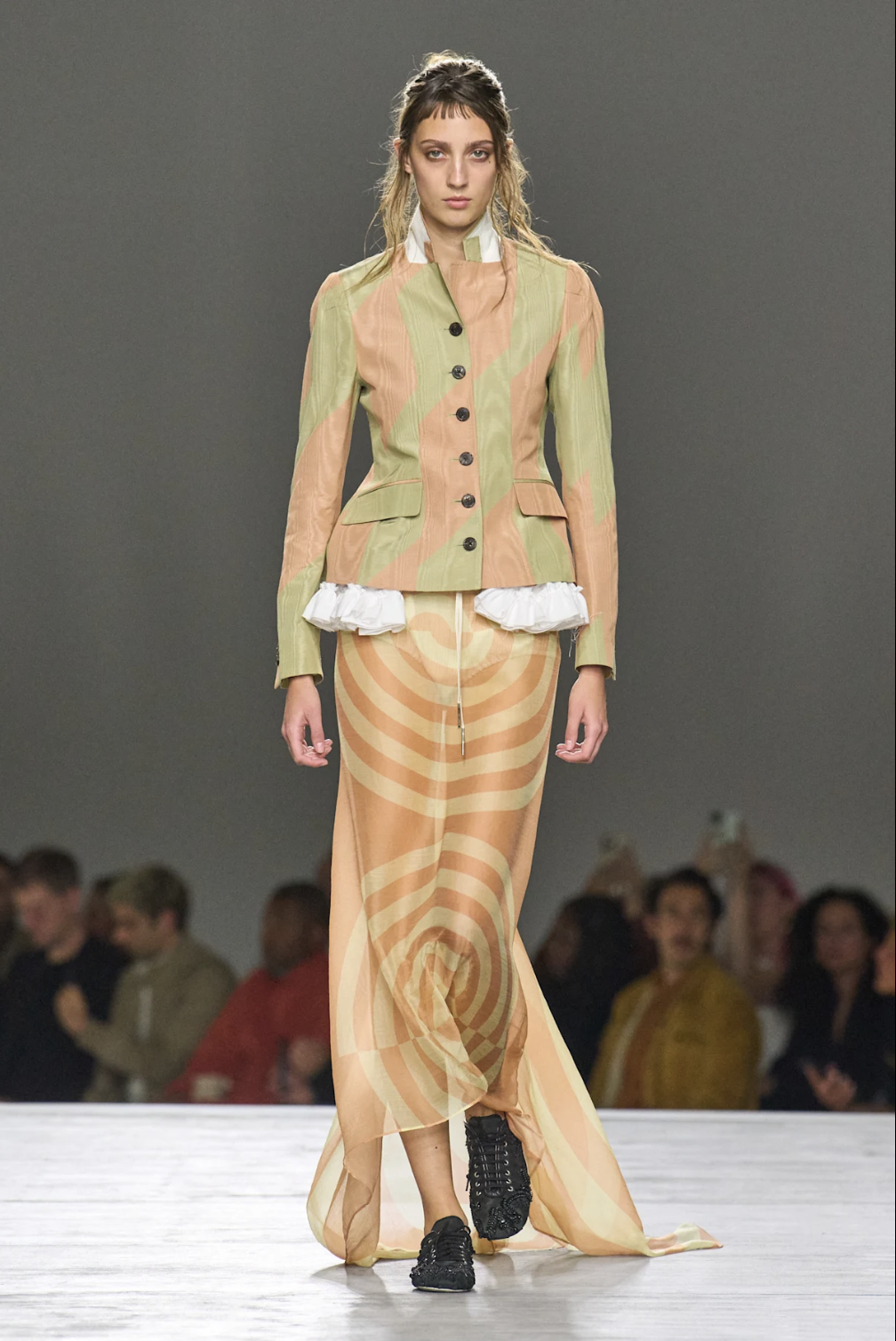
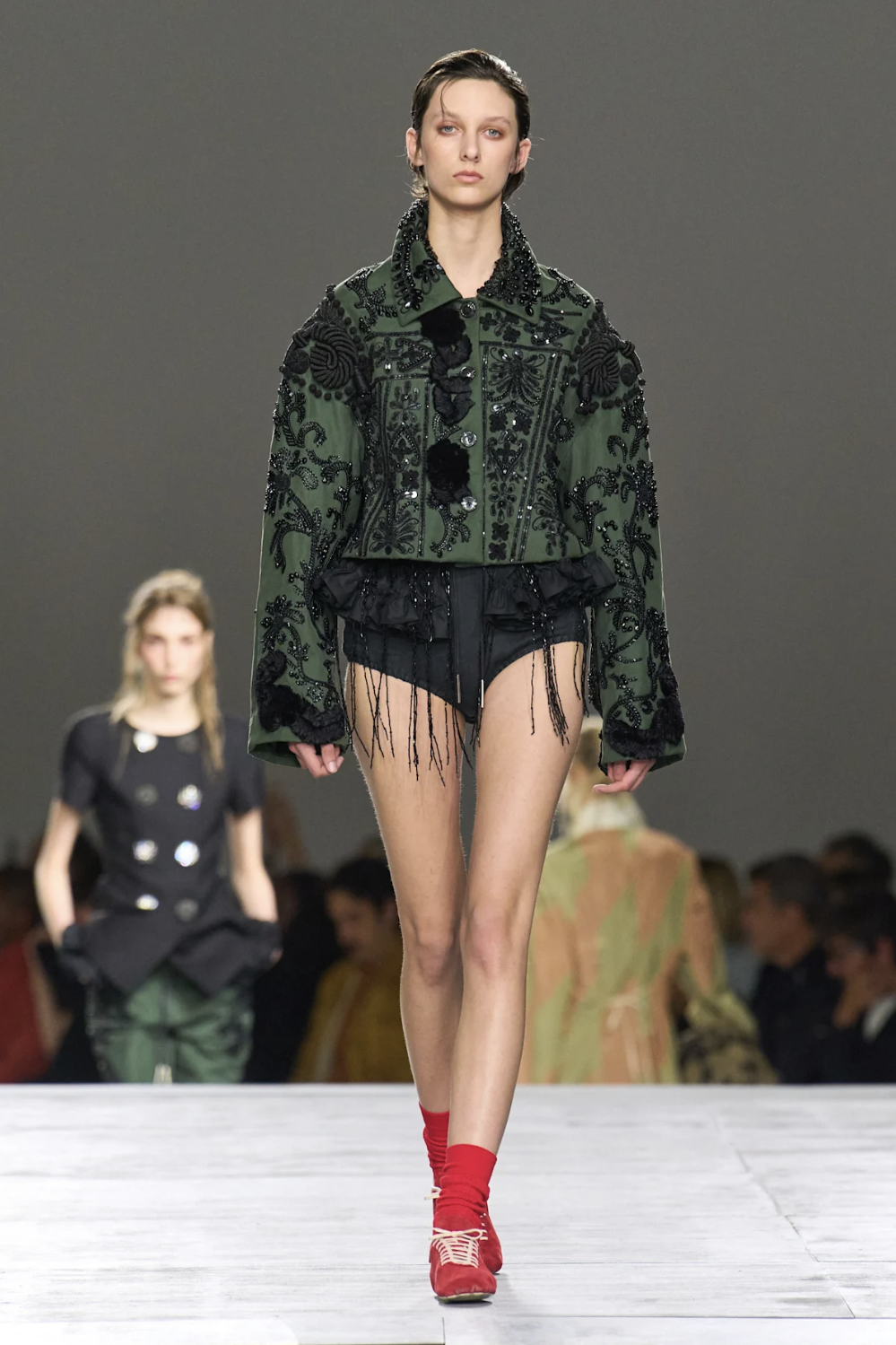
Anrealage
Kunihiko Morinaga continues to challenge the limits of the fashion industry through collaboration with Heralbony — a creative company that supports artists with disabilities and redefines the perception of art and design.
Grounded in passion and sincerity, the collection celebrates openness to new perspectives. Garments become living canvases depicting infinite landscapes and deeply personal inner worlds. Each piece is adorned with artworks printed on eco-friendly textiles. Dresses inflate like hearts, and the hemlines of voluminous skirts, jackets, and capes sway as if alive. Accessories expand this vision: cat-shaped bags with metronomic tails — created with robotics startup Yukai Engineering Inc. and inspired by their therapeutic Qoobo device — evoke the soothing rhythm of a purring embrace.
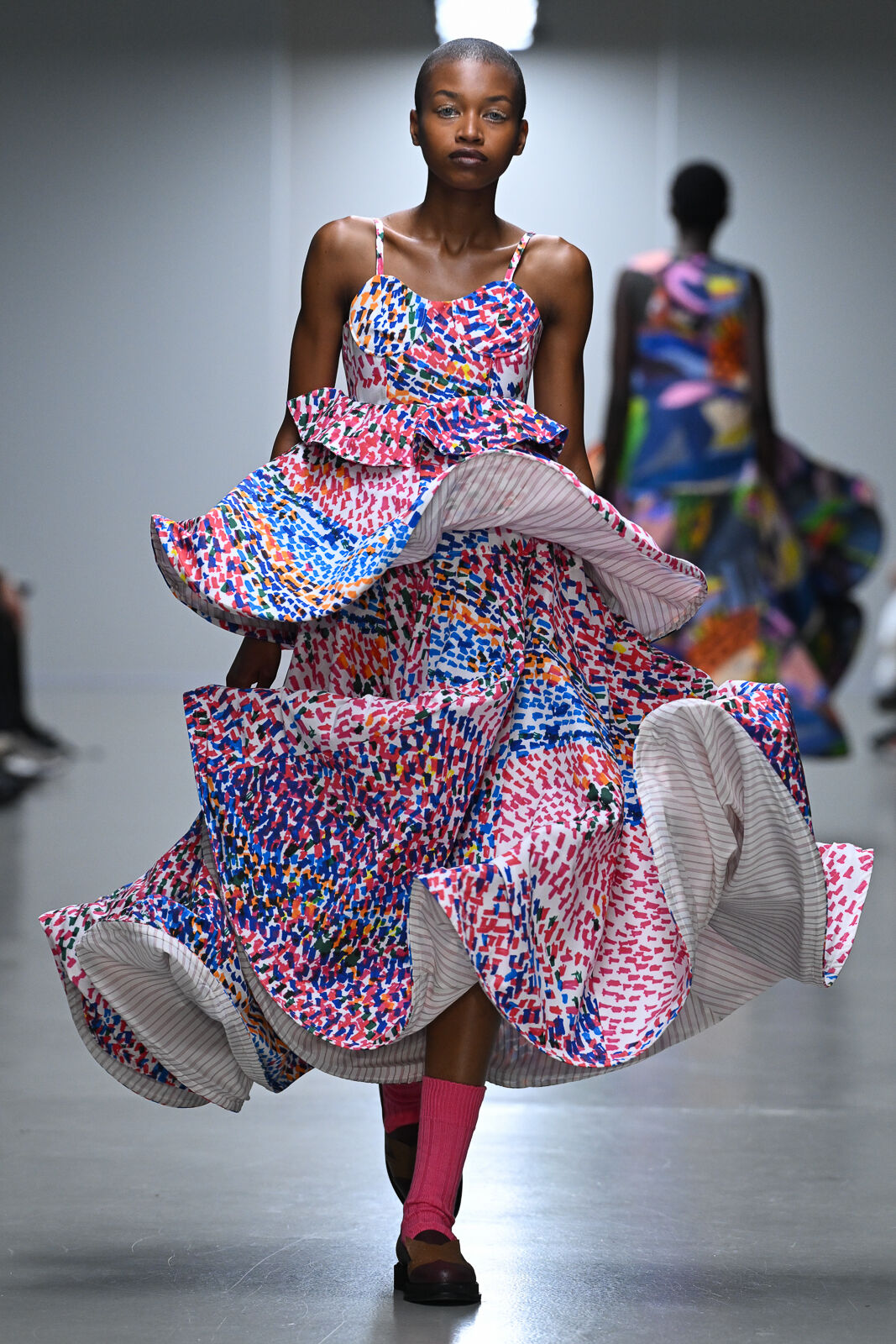
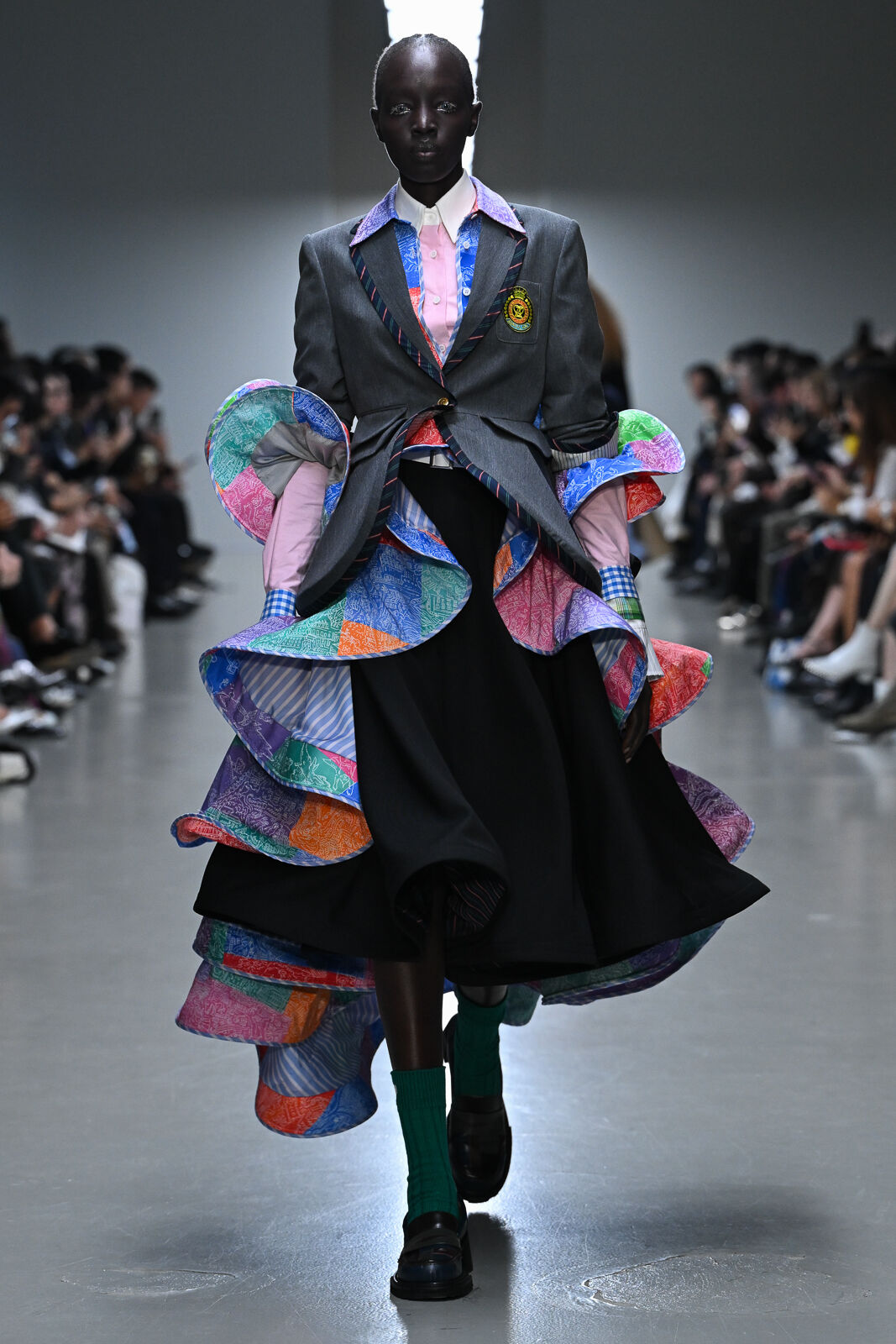
Ruohan
Everyday luxury for women — the concept that has guided the brand since 2021 — continues to evolve. Ruohan focuses on exceptional fabrics, impeccable finishing, and precision tailoring, offering a timeless wardrobe with refined nuances. Inspired by travel, art, and design in all its forms, the collection reflects a contemporary minimalism. Clean silhouettes harmonize with natural materials, revealing elegance through simplicity. Straight lines meet soft curves, creating a perfect balance of symmetry and asymmetry. The palette moves from stark black-and-white contrasts to muted neutrals. Every piece is meticulously designed, demonstrating craftsmanship and attention to detail. Ruohan’s aesthetic merges sophistication and practicality, evoking effortless chic.
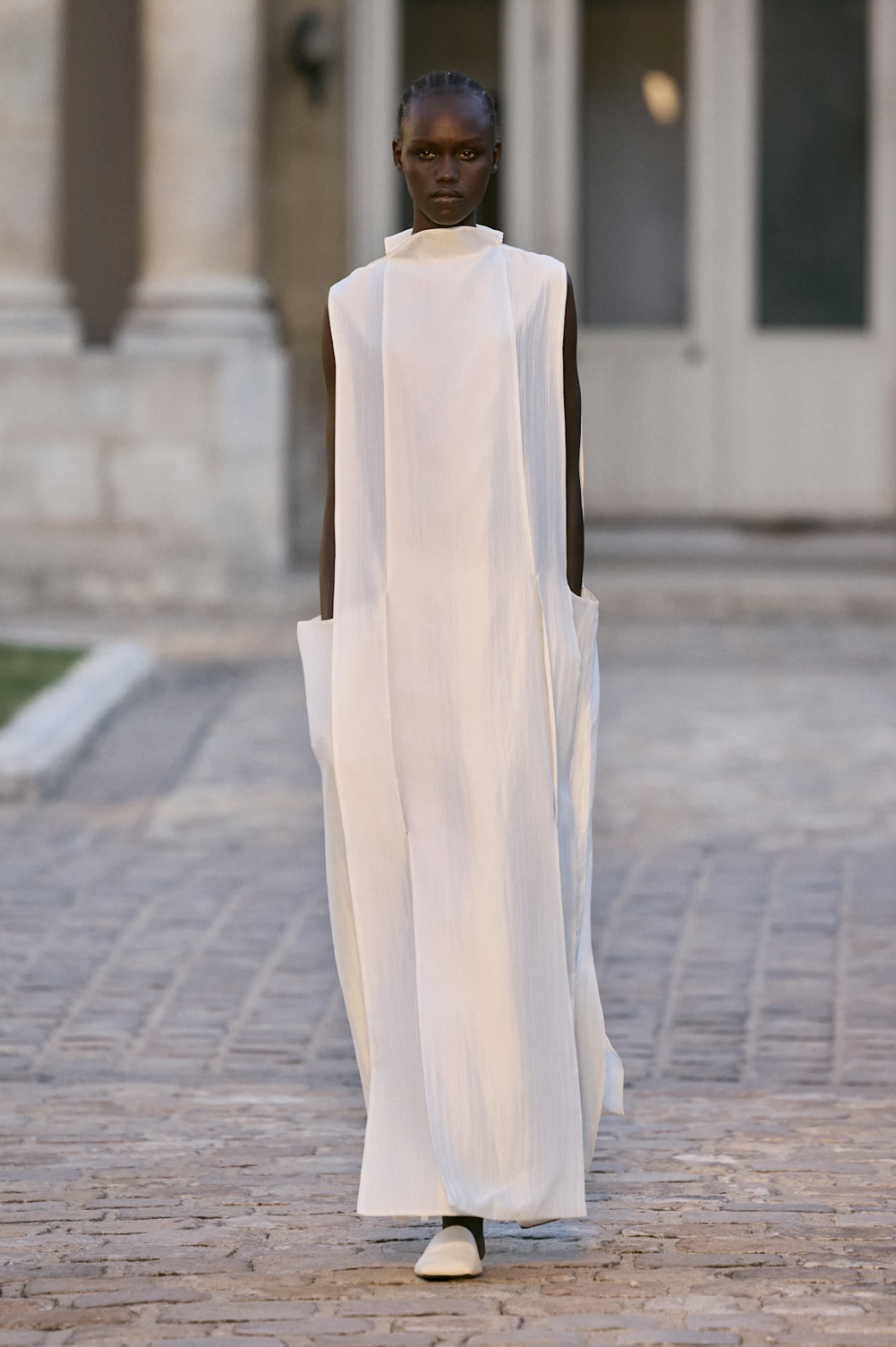
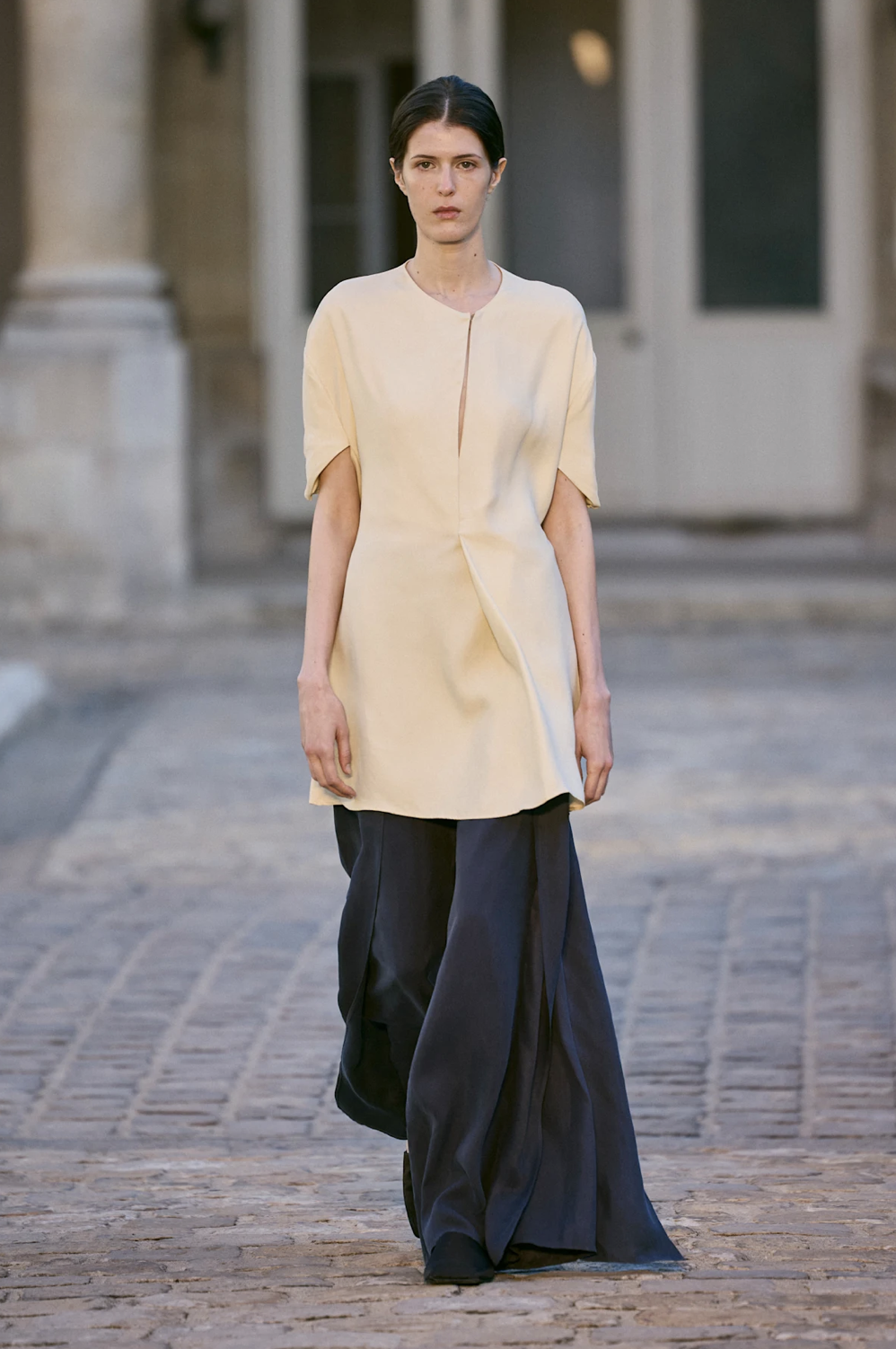
Courrèges
Nicolas Di Felice’s collection unfolded as a metaphor for the solar cycle. The show began with cool shades and structured forms that gradually melted into transparency and fluidity. Archival cuts softened, while accessories appeared to “melt” under imagined heat. Circular staging and a tension-building soundtrack created a sense of ascension toward light. Draped visored caps and checked mini skirts resembling solar panels appeared alongside hip belts echoing 1960s aesthetics. Swimsuit dresses and deep-cut silhouettes were paired with easy footwear — mules, boots, and kitten heels. Sportswear and utilitarian pieces gained new volumes and freedom. In the finale, the runway glowed with sunset hues: vinyl total looks and shimmering dresses of silk, knit, and sequins reflected the golden hour’s final light.
